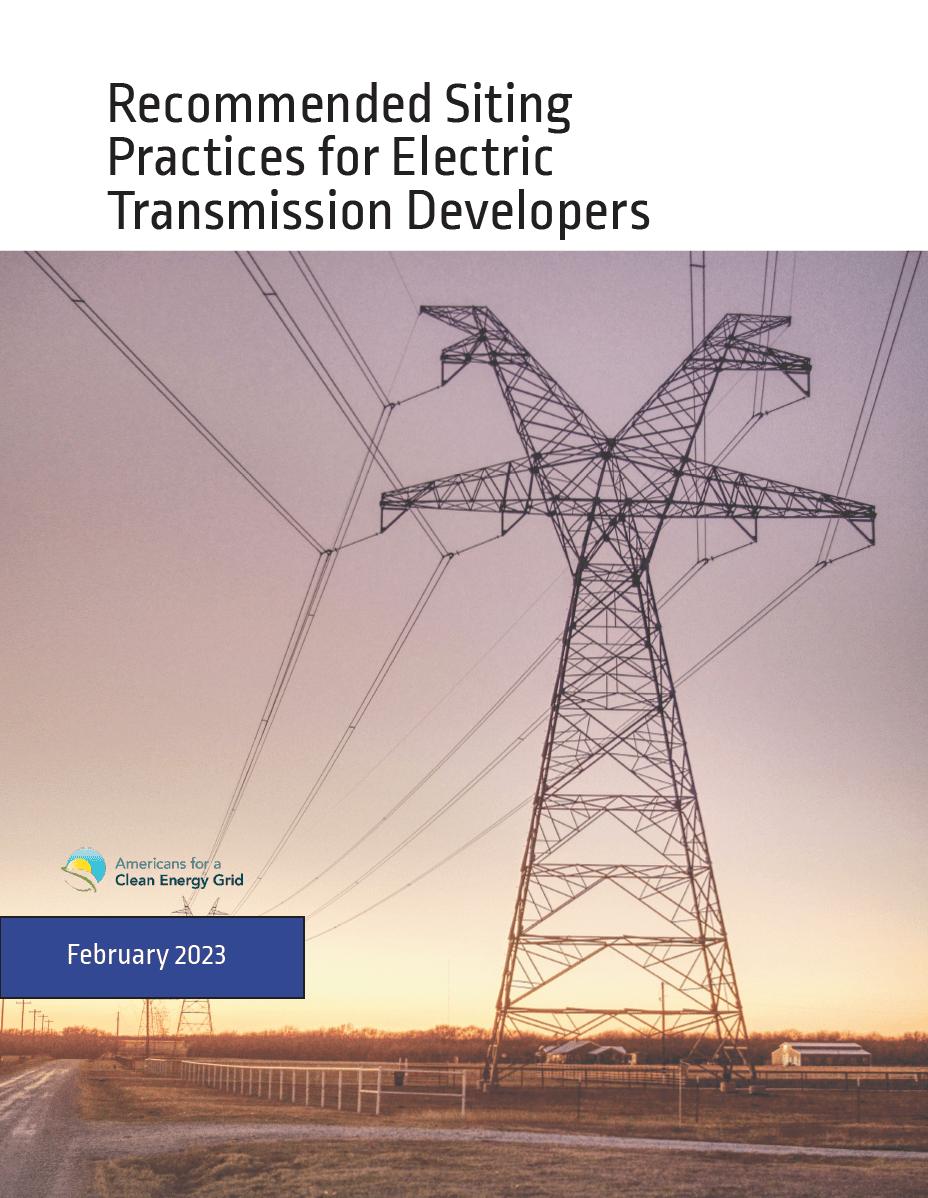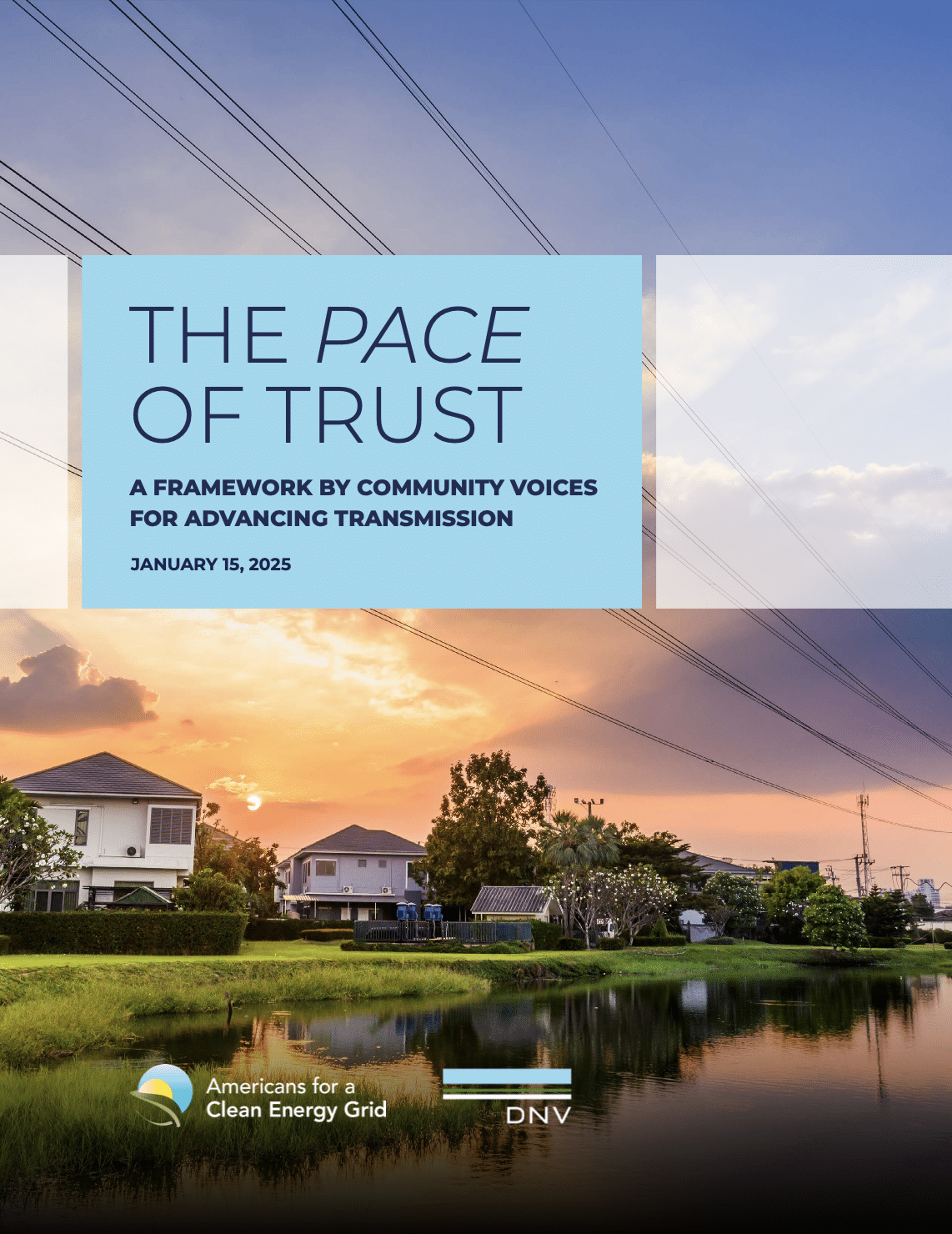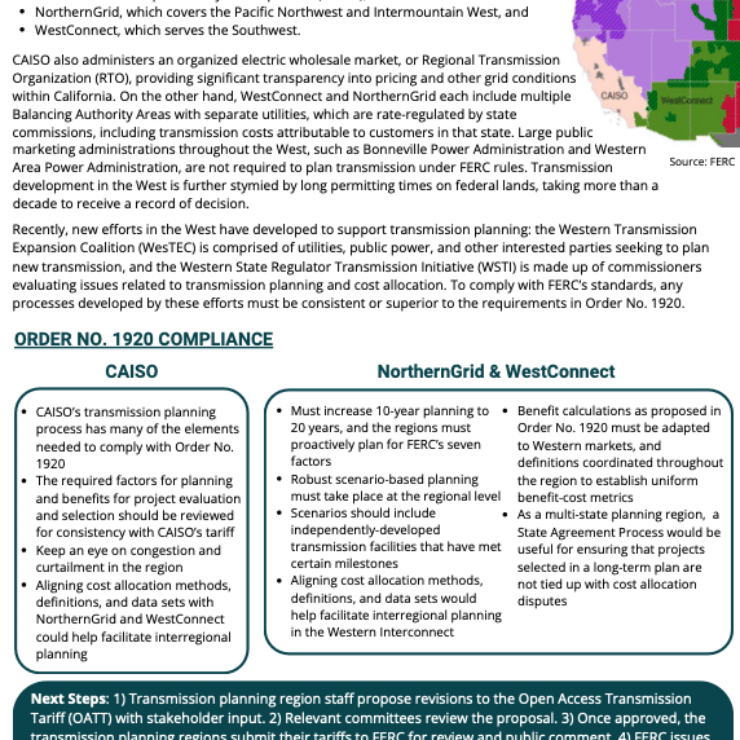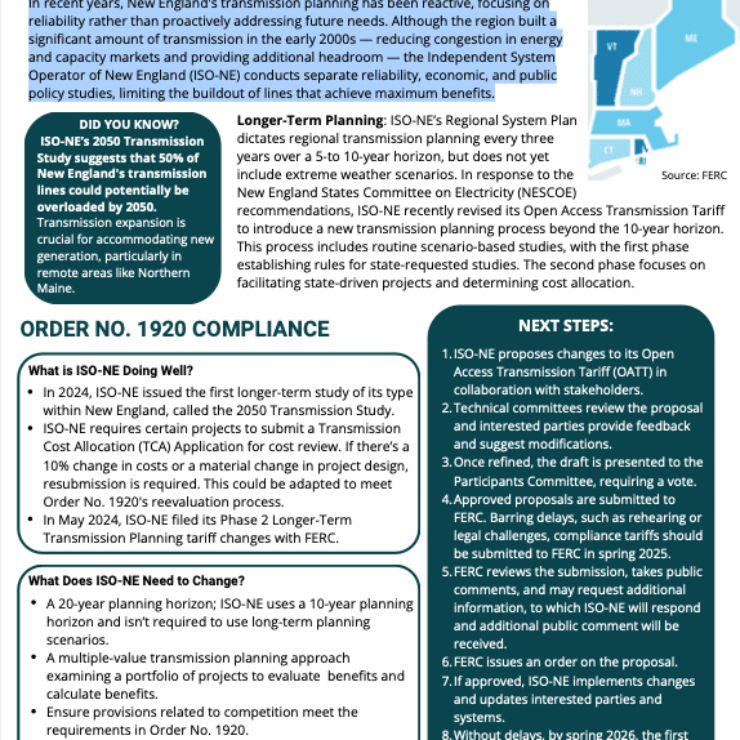Summary
Washington, D.C. — Interstate natural gas pipelines and high-capacity electric transmission lines serve the same purpose: transporting energy from producers to consumers across significant distances. Yet, the relative ease of siting and permitting interstate natural gas pipelines under the Natural Gas Act has produced a robust national network, with new and upgraded projects routinely approved through a timely, predictable process that incorporates public participation and efficient judicial review. In contrast, the siting and permitting of electric transmission lines often involves overlapping state and federal jurisdictions, resulting in protracted timelines that can delay critical infrastructure for decades. Establishing greater consistency between the processes for natural gas pipelines and high-voltage transmission lines would accelerate transmission development while preserving a meaningful role for states.






